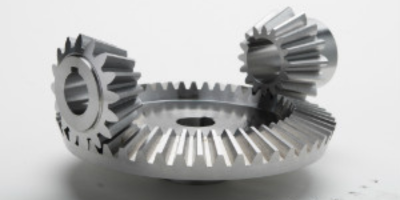Bevel gears are a fascinating and essential component in the world of mechanical engineering. Whether you’re working on heavy machinery, automotive transmissions, or even smaller household devices, bevel gears play a pivotal role in transferring motion efficiently and accurately. These gears are uniquely designed to transmit power between shafts that intersect, typically at a 90-degree angle. Their conical shape and angular tooth design make them especially useful in applications that require directional changes in drive systems.
In simple terms, a bevel gear is a gear where the axes of the two shafts intersect and the tooth-bearing faces of the gears themselves are conically shaped. This allows the gear to effectively change the axis of rotation. It’s a clever bit of engineering that allows for a smooth and quiet transmission of power.
Types of Bevel Gears
There are several different types of bevel gears, each designed to meet the specific needs of different applications:
- Straight Bevel Gears: These are the most basic form, where the gear teeth are straight and taper toward the apex of the gear. They’re suitable for low-speed, low-torque applications.
- Spiral Bevel Gears: These feature curved teeth at an angle, offering smoother and quieter operation compared to straight bevel gears. They’re often used in automotive differentials.
- Zerol Bevel Gears: A hybrid between straight and spiral bevel gears, Zerol gears have curved teeth but with zero spiral angle.
- Hypoid Bevel Gears: These are similar to spiral bevel gears but with an offset in the shaft axes. They are known for their high efficiency and smooth operation at high torque levels.
Each of these types has unique characteristics that make it ideal for specific uses. Spiral bevel gears in particular are favored in high-performance vehicles because of their strength and smooth, quiet operation.
Common Applications of Bevel Gears
Bevel gears are incredibly versatile and find use in numerous industries:
- Automotive: Used in differentials to allow wheels to rotate at different speeds.
- Aerospace: Utilized in flight control systems and engine components.
- Industrial Machinery: Essential in equipment that involves angular motion, like conveyor systems and mining equipment.
- Marine Equipment: Applied in propulsion systems and steering gear assemblies.
Their ability to handle complex torque and motion requirements makes them indispensable in these environments.
Advantages of Using Bevel Gears
The advantages of bevel gears are numerous, which is why they’re so widely adopted in mechanical systems:
- Efficient Power Transmission: The angled design allows for effective transfer of power with minimal energy loss.
- High Load Capacity: Especially in spiral and hypoid variants, bevel gears can handle heavy loads and high torque.
- Smooth and Quiet Operation: This is particularly true for spiral bevel and hypoid gears.
- Compact Design: Their shape allows for efficient use of space in design, making them ideal for constrained installations.
Maintenance and Lifespan
Like any mechanical component, bevel gears require proper care to ensure longevity. Regular lubrication, correct alignment, and inspection for wear or damage are key to keeping the system running smoothly. Poor maintenance can lead to noise, increased wear, and even gear failure, which could cause downtime and expensive repairs.
Bevel gears are typically made from hardened steel or other durable alloys to withstand the forces they encounter in operation. The manufacturing process is complex, often involving precision machining and heat treatment, which contributes to their durability and performance.
Final Thoughts
In summary, bevel gears are a critical element in many mechanical and industrial systems. Their unique shape and function allow for efficient, angled power transmission across a range of applications, from cars and aircraft to factory equipment. Whether you’re an engineer designing a machine or a technician maintaining one, understanding how bevel gears work and how to care for them is essential.




